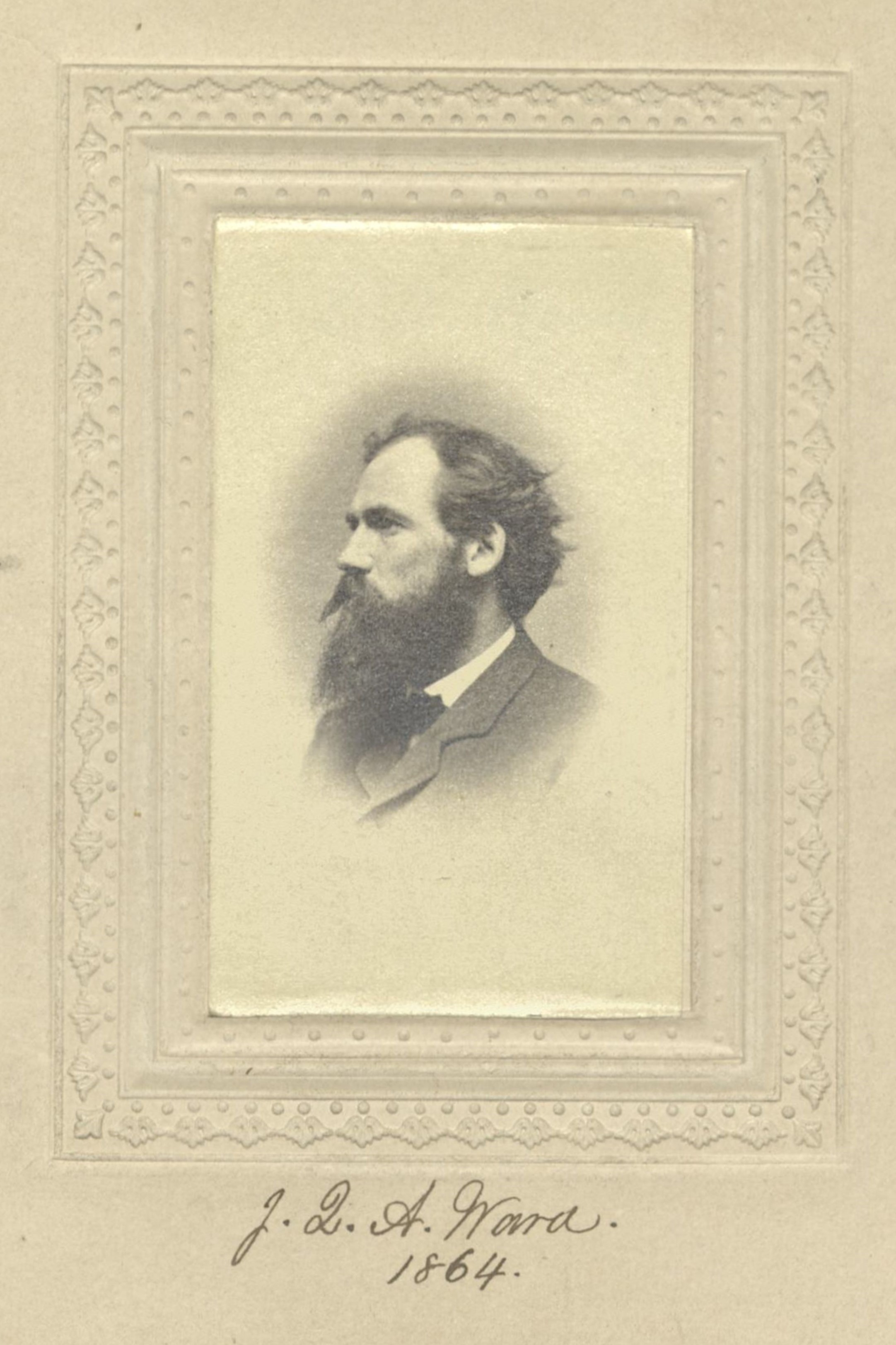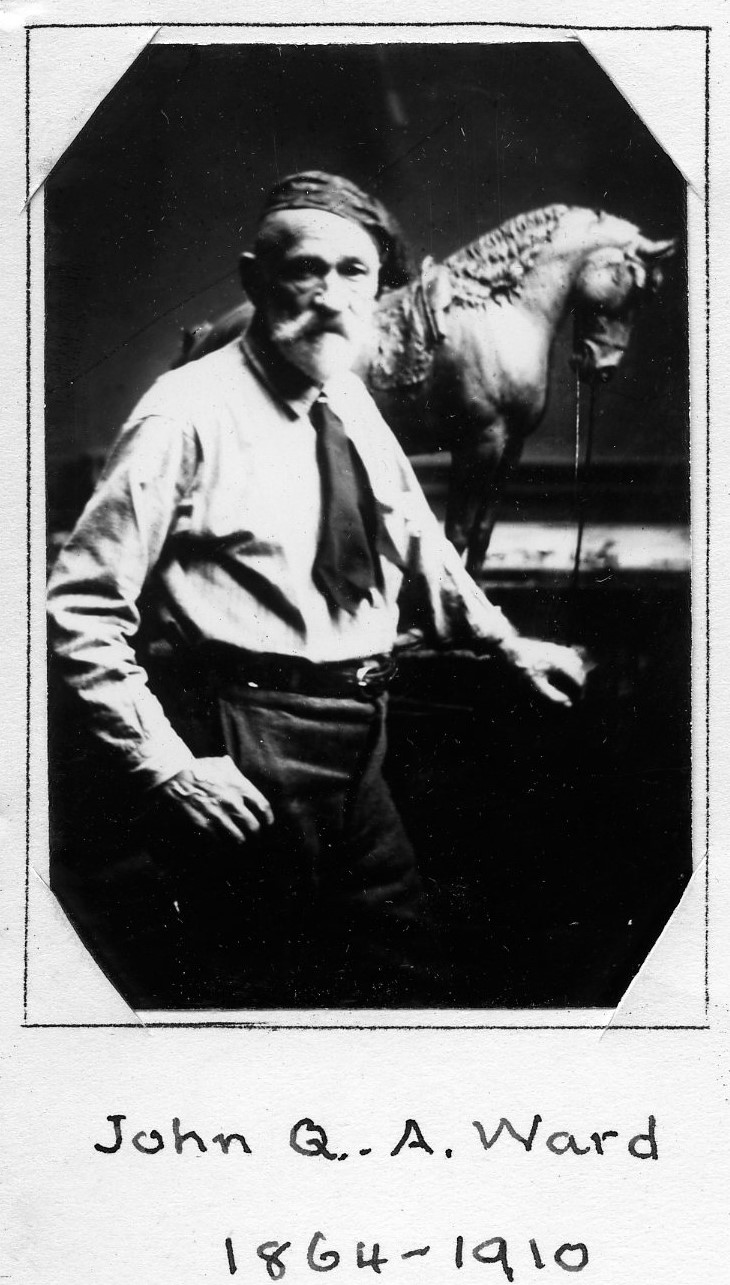Sculptor
Centurion, 1864–1910
Born 29 June 1830 in Urbana, Ohio
Died 1 May 1910 in New York (Manhattan), New York
Buried Oak Dale Cemetery , Urbana, Ohio
, Urbana, Ohio
Proposed by Henry Augustus Loop, Henry K. Brown, and Louis Lang
Elected 5 March 1864 at age thirty-three
Archivist’s Note: First vice president of the Century Association, 1906–1910; second vice president, 1895–1905. Brother of Edgar Melville Ward.
Proposer of:
Seconder of:
- Karl Bitter
- I. Wyman Drummond
- Augustus Saint-Gaudens
- Montgomery Schuyler
- Charles F. Smillie
- Wordsworth Thompson
- Charles Dudley Warner
Supporter of:
Century Memorials
The following resolution was read, unanimously adopted.
The Century Association desire to record their sense of the great loss they have sustained in the death of their first Vice-President, John Quincy Adams Ward. An artist of rich native endowment developed by three score years of work and steadfast study, as alert and curious at the close as at the opening of his long and successful career[,] his multiple memorial survives in the monumental work his hand wrought in various parts of the land. We who knew and loved him feel pride in tracing in his bountiful nature those virtues—devotion, courage, enlightened patriotism, fierce independence and fidelity to high standards, which he embodied in his statues of illustrious men. Those of his own craft recognize in him especially the union of extraordinary gifts with still more extraordinary artistic probity, that conscience du métier which admits no sacrifice of ideals, and gives and demands the best attainable service to art. To his fellow Centurions of whatever calling, he was the trusted, admirable and beloved companion, whose candor, penetrating wit, sturdy and acute judgment and wide knowledge and sympathy made precious his contribution to the life of the Club. His memory will long remain with us and when the last of those who knew him and cherished him shall have passed away, it will survive in that Century tradition which grows from our generation to another of such noble souls.
Resolved, That this minute be spread upon the records of the Association and that an engrossed copy thereof be sent to the family of Mr. Ward with the assurance of our heartfelt sympathy.
George William Knox, Secretary
Monthly Meeting Minutes, 4 June 1910
John Quincy Adams Ward was a vital force in The Century for forty-six years, serving it in many capacities and contributing to its eminence and its charm. Like Winslow Homer, with whom the critics compare him as sculptor may be compared with painter, he is described as essentially American, but he differed from Homer in his love of companionship. The Century was life of his life, and he as much as any man aided in the forming of the esprit de corps which constitutes its spiritual unity. It is through such men that it truly finds itself. The Century in June put on its minutes a memorial to Mr. Ward and in November last it gave an exhibition of his work and listened to addresses characterizing him as artist, friend, and man. It were an impertinence for me to attempt to add to that estimate, and it is my humble duty to record the simple story of his life.
Mr. Ward was born in Urbana, Ohio, June 29, 1830. With an inartistic environment and an unsympathetic home his artistic temperament could not be repressed. It is related of him that he never saw a statue until he was fifteen years old and then one by Powers. Helped finally by a sister, he studied and assisted Henry K. Browne [sic: Brown], from 1850 to 1856. Then for a brief time he was in Washington and later visited the Indian country. In 1862 he was established in New York which place thenceforth was his home. His success was immediate and signal and until his death he maintained the position easily won at the head of the profession of his art in America.
His brethren bestowed on him all the honors in their gift. He was Academician since 1865, Vice-President and President of the National Academy of Design, President of the National Sculpture Society since its formation, and member of many societies of artists. His end was peace; he never outlived his creative powers, his love for his art, nor his joy in the companionship of his friends. And with us abides the memory of artist and friend—strong, original, a follower of no master, distinguished by a simplicity which tolerated no pretence, his art an expression of himself, and himself the delightful comrade, the trusted friend, the rare genius, the true man.
George William Knox
1911 Century Association Yearbook


